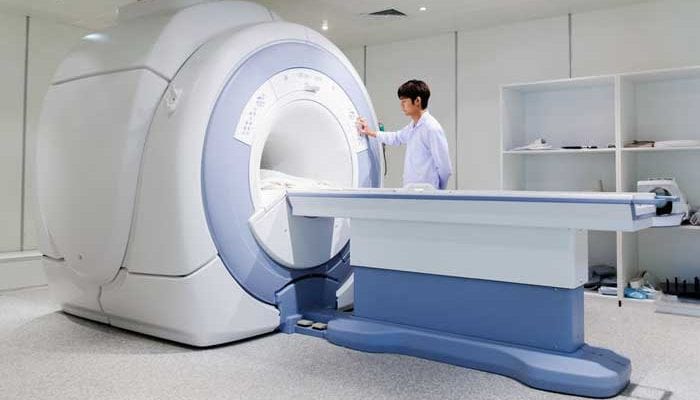SCHENECTADY, NY – General Electric (GE) plans to revolutionize the course of magnetic resonance (MR) history once more when later this month they introduce the industry’s first 160-decibel (dB) system called the EARBLEED.
 “What do patients complain about most when utilizing one of our older generation models?” asked GE spokesperson Thomas Electric. “It’s not loud enough, not jarring enough. They can hear their own thoughts. We took that feedback to heart.”
“What do patients complain about most when utilizing one of our older generation models?” asked GE spokesperson Thomas Electric. “It’s not loud enough, not jarring enough. They can hear their own thoughts. We took that feedback to heart.”
The Occupational Safety & Health Administration (OSHA), which is part of the United States Department of Labor, has set legal limits on noise exposure to 90 decibels (dBA) for an 8-hour day. The new GE EARBLEED, like its predecessors, disregards OSHA’s recommendations completely. In fact, GE plans to advertise their new MR scanner by focusing on its ability to perforate and obliterate eardrums like never before.
“It’s pretty amazing,” said one anonymous patient, who immediately went to ENT after stuffing his ear with gauze to tamponade the profuse aural exsanguination. “Wait… what? Did you say something? Did you ask me another question? Hello?!”
GE has made several modifications to make EARBLEED the masterpiece that it is. First, the EARBLEED is powered by two jet engines (140 dBA). Second, the EARBLEED signals when a scan is about to start or stop with a 12-gauge shotgun blast (165 dBA). Third, not only will the MRI make its usual collection of sounds, they will also be (1) augmented with rock-concert amplifiers (100 dBA) and (2) supplemented by the sounds of lawnmowers (90 dBA), chainsaws (110 dBA), and jackhammers (130 dBA).
Finally, instead of providing patients with soundproof earplugs and earmuffs, they will be given around-the-ear headphones turned up to eleven to play the heavy metal album of their choice (the default album will be Slayer’s Reign in Blood). Of note, pain begins at 125 dBA.
So what does GE have up their sleeve for MRI scanners after EARBLEED?
“We’re focusing on making the experience way more claustrophobic,” said Electric with a diabolical laugh. “We’re thinking of placing the patient in a GE coffin with a GE straitjacket and placing the GE scanner in a GE grave six-feet underground. Do you think that’s claustrophobic enough? I mean, who wouldn’t want an MRI under those conditions, right?”







